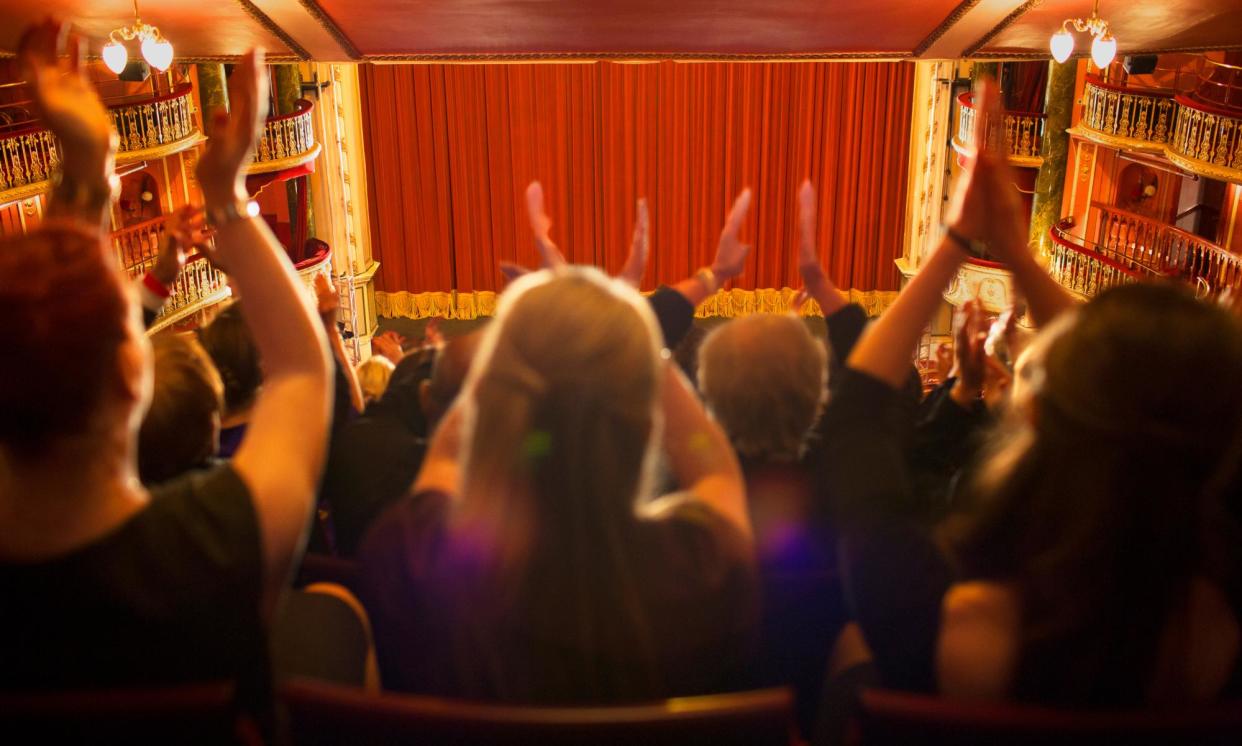A slow handclap for standing ovations

In addition to the increasing frequency of smartphone use in theatres and concerts (Letters, 27 May), may I draw your attention to another insidious practice that is spoiling the enjoyment of visits to the theatre. Standing ovations, originally, I believe, accorded only to extraordinary performances of particularly high acclaim, are now initiated by a handful of theatregoers who think that this is the normal way to applaud a curtain call. As a result, the rest of us who would like to see and acknowledge the assembled cast while seated either have to sit looking at the bottoms of the people in the row in front or to stand up as well, blocking the view of the people behind. Perhaps theatres should offer “standing ovation” seats on the left half of the theatre while the rest of us can sit on the right.
Karl Sabbagh
Defford, Worcestershire
• I had to work hard to not “see” all the multitudes of mobile phones out on the top floor of the Musée d’Orsay in the crowded impressionist galleries during the Easter holidays. And many of these visitors with their phones out just saw the paintings through their cameras. They clicked and moved on. I bought postcards from the museum shop. Galleries should have one day a week mobile-free. Or even better, one day a week for phones.
Sarah Sheen
Beverley, East Yorkshire
• Have an opinion on anything you’ve read in the Guardian today? Please email us your letter and it will be considered for publication in our letters section.


